Long Term Monitoring of Health Inequalities: Headline Indicators – October 2014
Annual update of the 'Long-term Monitoring of Health Inequalities' headline indicators.
This document is part of a collection
Trends in relative inequalities (RII)
RII indicates the extent to which health outcomes are worse in the most deprived areas compared to the mean. While comparisons of RII between indicators are possible, they should be made with some caution, in particular where absolute values are significantly higher or lower in the compared indicators, or where the measurement scale differs (for example, relative inequalities in Mental Wellbeing scores, which are based on responses to survey questions, compared to relative inequalities in an age-standardised mortality rate).
The following charts group indicators in this report by theme: all-cause mortality, cancer, coronary heart disease, alcohol and birthweight. Across the full range of indicators, relative inequalities have remained highest for the all-cause mortality, coronary heart disease mortality and alcohol-related indicators throughout the period covered by this report.
All-cause mortality
Relative inequalities in premature mortality (all ages under 75) have been stable since 2006, and are unchanged in the last year despite a continued reduction in premature mortality rates across Scotland. Among the 15-44 age group, which accounts for more than 2,000 deaths each year, relative inequalities have reached their lowest level since 1998 following a drop from their highest level in 2011.
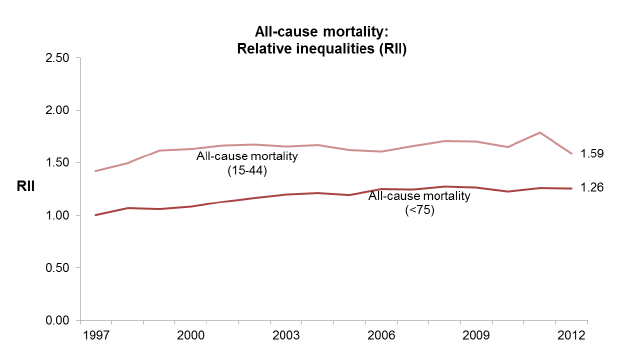
Cancer
There is no clear long-term trend in relative inequalities in cancer incidence among people aged under 75 over the time series. Relative inequalities in cancer mortality, between ages 45 and 74, increased slightly until 2004 and have been fairly stable since.
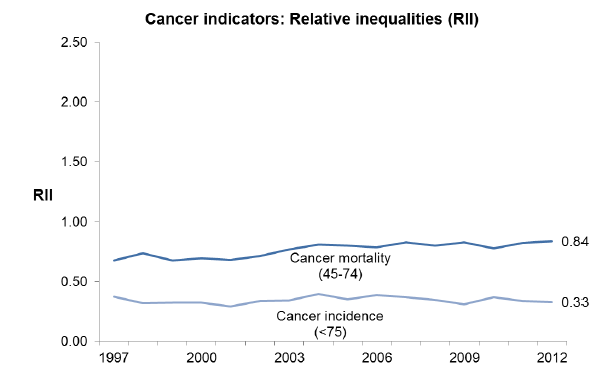
Coronary heart disease
Relative inequalities have increased in CHD mortality among adults aged 45-74 over the long term. Despite stabilising somewhat since 2008, an increase in the last year took RII to its highest level in the time series. Relative inequality in heart attack admissions (ages under 75) has increased from its lowest level in 2008.
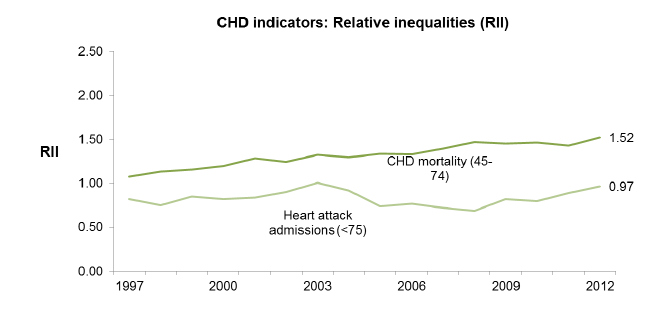
Alcohol
The long-term pattern of decreasing relative inequality in alcohol-related hospital admissions began to stabilise from 2008, but reached its lowest level in the time series in 2012. Relative inequalities in mortality rates, between ages 45 and 74, increased in 2012. Although mortality rates reached their lowest levels in the most and least deprived areas, the decrease was proportionately greater in the least deprived areas, resulting in an increase to RII.
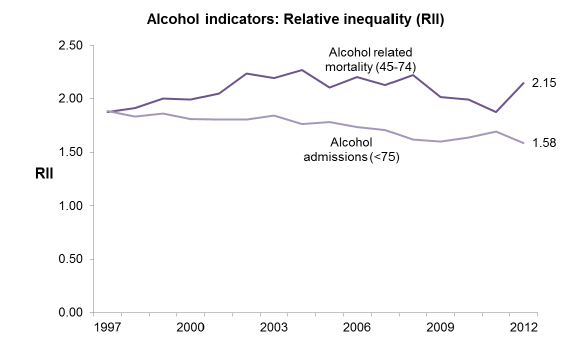
Birthweight
Relative inequality in the proportion of babies with a healthy birthweight has remained very low. Although there are more cases of babies born 'small for gestational age' in the most deprived areas, the effect is partly balanced out by a greater proportion of babies in the least deprived areas born 'large for gestational age'. Relative inequality in the low birthweight indicator is greater, with more babies born weighing below 2.5 kg in more deprived areas. Relative inequality has increased slightly in the last two years following a decline from 2006.
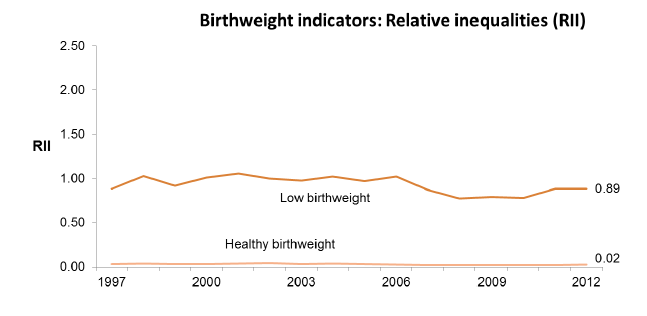
Contact
Email: Craig Kellock
There is a problem
Thanks for your feedback